More and more people are starting to use AI assistants (AKA LLMs) like ChatGPT, Perplexity, or Google AI Mode to discover products, services, and brands. And this isn’t something we’re making up. We invite you to read OpenAI’s official report “How people are using ChatGPT” (September 15, 2025)”.
This trend suggests the rise of a new field often referred to as “AI Visibility” or “AI Search” where brand mentions may become as important as, or in some cases even more relevant than, traditional Google rankings.

Beyond discovery, AI assistants can also influence the decision to purchase a product, hire a service, or choose one brand over another.
How AI mentions shape perception and trust
When people see your brand consistently mentioned in AI-generated answers, it signals credibility and authority. These mentions influence how users perceive your expertise compared to competitors. The more visible you are in AI responses, the more likely users are to trust and ultimately choose your brand.
For that reason, it’s worth understanding whether your brand appears in AI responses (or not), which other brands are mentioned, and in what context. These insights give you a clearer view of your visibility, reputation, and competitive position in this new discovery context — helping you prioritize actions that improve how your brand is perceived in AI assistants.
But how can you actually track whether your brand appears in AI answers? Let’s break it down.
Manual tracking (the slow way)
One option is to do the tracking manually for each model.
ChatGPT
- Go to ChatGPT.
- Enter prompts like “What are the best project management tools?” or “Which SEO software do you recommend?”.
- Read the responses and note down if your brand is mentioned.
- Repeat this process across multiple prompts, countries (you need a VPN for this), and languages.

Perplexity
- Visit Perplexity.
- Enter prompts like “Top SaaS tools for startups” or “Best AI visibility platforms in 2025”
- Read the answers carefully and check if your brand is mentioned.
- Repeat this process with different prompts, regions, and languages to get a broader view of your brand’s visibility.
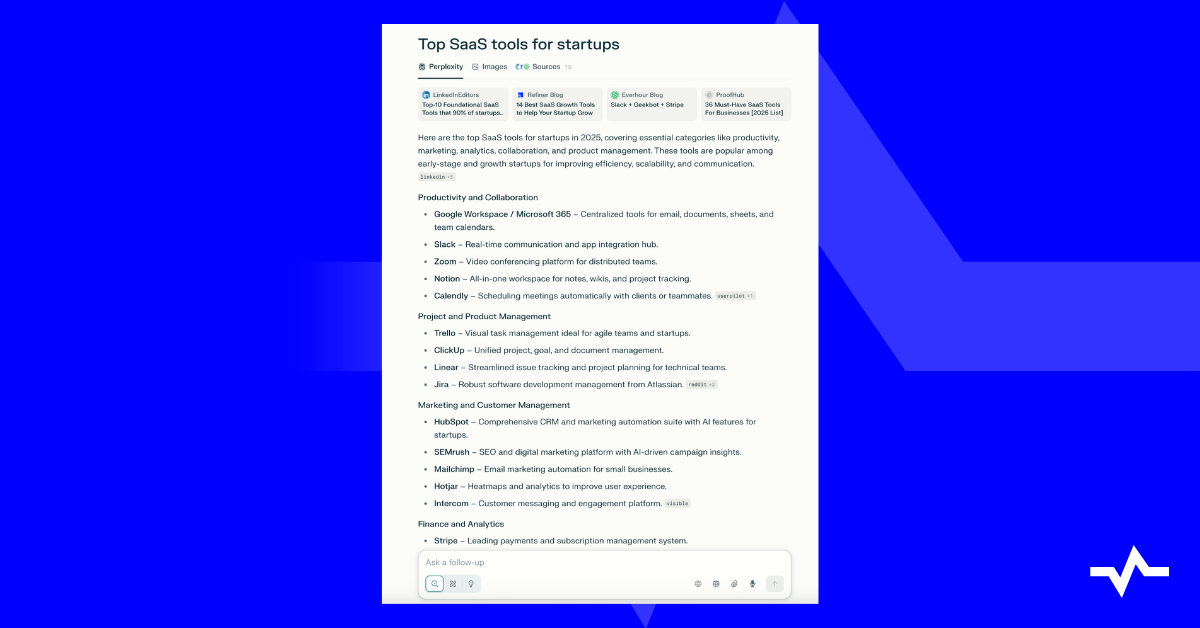
Google AI Overviews
- Go to Google and search for queries that trigger AI Overviews, such as “best marketing analytics tools” or “how to improve online visibility”
- Review the AI-generated summary and see if your brand appears among the mentioned sources or recommendations.
- Repeat the test with several queries, categories, and countries (using a VPN if needed) to understand how your brand shows up in Google’s AI-powered results.
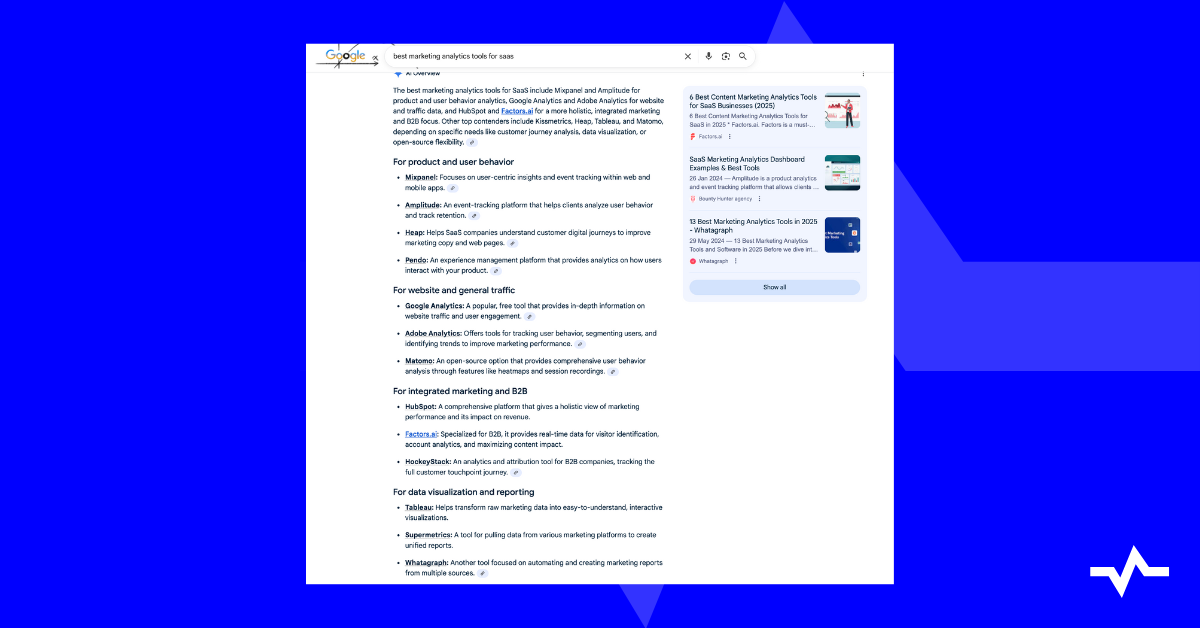
Google AI Mode
- Open Google AI Mode and type queries like “top SaaS startups in Europe” or “best AI tools for digital marketing”
- Review the generated responses and check whether your brand appears in the answers.
- Try multiple prompts, and locations to see how your visibility changes across contexts.
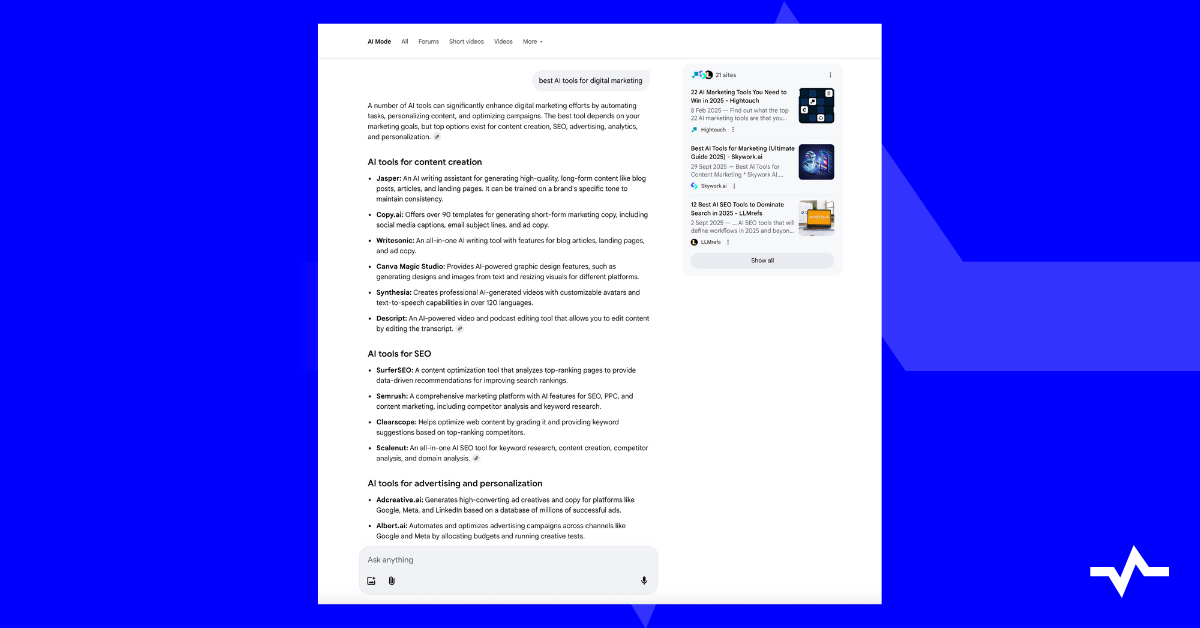
This works for quick checks, but it’s time-consuming. You need to keep track of dozens (or even hundreds) of queries, and doing it this way simply isn’t scalable over time. As your list of prompts grows, it becomes harder to maintain consistency and gather meaningful insights.
That’s why automated tracking with tools like LLM Pulse is a better approach. It centralizes all your data, keeps it updated in real time and saves countless hours of manual work.
Automated tracking with AI visibility tools (the smart way)
Instead of checking everything by hand, you can use AI visibility trackers like LLM Pulse (or any other you prefer). These platforms are built to automatically monitor brand mentions and website citations in AI responses, across multiple LLMs / models, prompts, countries, and languages.
- Create a project: Set up a project for your brand by adding its name, website, industry, and matching names (don’t worry — our AI handles this for you).
- Add prompts: Choose from our suggested prompts or define your own — reflecting the questions users might ask in ChatGPT, Perplexity, AI Overviews, or Google AI mode.
- Automated checks: Our tool runs these prompts on a regular basis and gathers the answers automatically, saving you from manual work.
- Dashboards with insights: Instead of scrolling through AI chats, you get structured dashboards showing brand mentions, sentiment, competitor presence, and whether your site appears as a citation (link) or just a mention.
- Charts and exports: All this data is visualized in clear charts and can be exported (CSV, Excel, API) for deeper analysis or reporting.
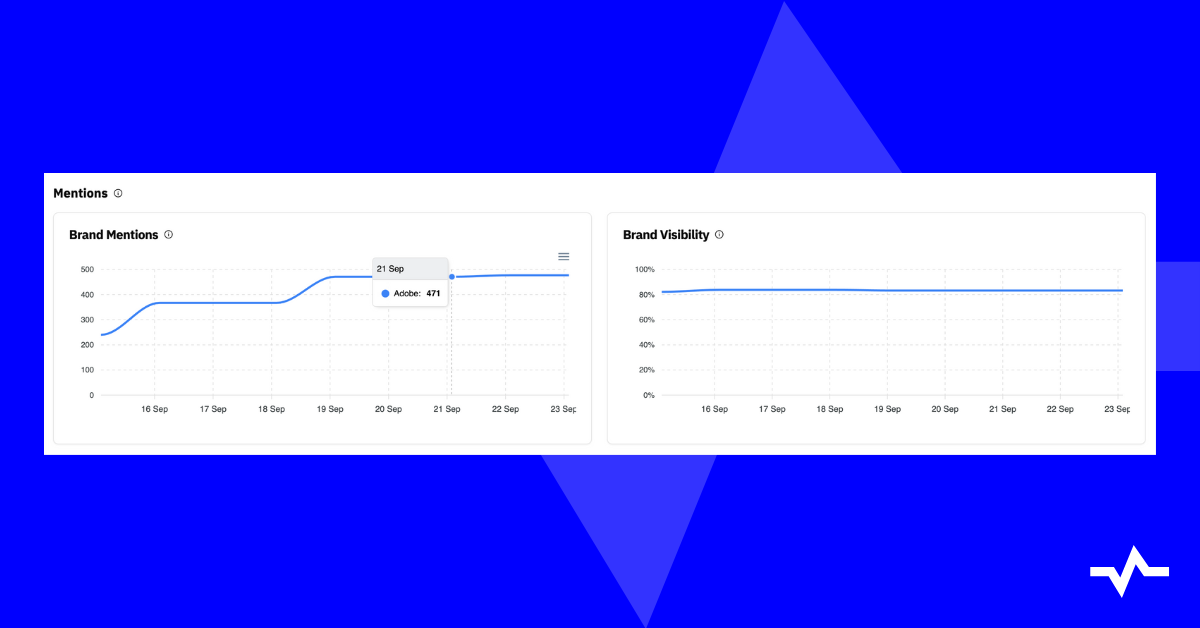
This provides a systematic framework to evaluate your brand’s visibility in AI responses, enabling data-driven decisions on positioning, messaging, and SEO + AEO / GEO strategies.
With the number of brand mentions collected, LLM Pulse builds visibility metrics over time. These metrics allow you to see how your presence evolves, compare it directly with competitors, and calculate your share of voice in AI responses. Combined with sentiment and citation data, this gives you a multi-layered view of how your brand is represented across AI assistants.
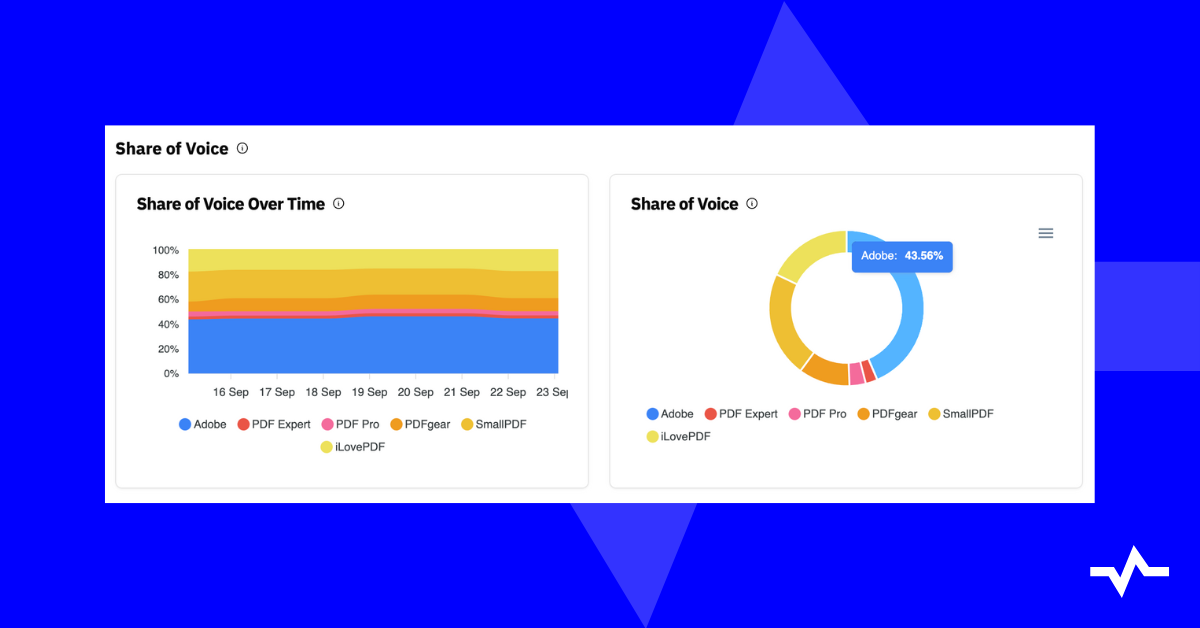
On top of the aggregated metrics, you can also dive into the detail of each individual AI response. This lets you see exactly which brands appear, how they are positioned within the answer, and in what context. It’s a way to move beyond raw numbers and understand the narrative AI assistants are building around your market.
👉 Explore how to set up your first project in our Getting Started guide.
Why this matters
AI is increasingly shaping how people discover products and services. If your competitors are mentioned while you’re invisible, you’re already at a disadvantage. Tracking mentions in AI responses helps you:
- Understand brand visibility (and soon “reputation”) in this new space.
- Identify growth opportunities.
- Measure the impact of marketing and PR efforts.
With a tool like LLM Pulse, you move from random manual checks to a consistent, automated, and data-driven approach.
Are your brand mentions in AI responses on your radar yet? Now is the moment to pay attention, before competitors take the lead.
FAQ
Is it important to monitor brand mentions in LLMs?
Yes. It is the foundation of GEO (Generative Engine Optimization). Mentions in AI engines determine how users discover, evaluate, and trust brands in AI-driven environments. Monitoring them helps identify which sources and prompts generate visibility, how often a brand appears compared to competitors, and what sentiment surrounds those mentions, offering a clearer view of reputation and influence beyond traditional search rankings.
Is it possible to track brand mentions in AI Search?
Yes. Tools like LLM Pulse can identify when and how brands appear in AI-generated answers across platforms such as ChatGPT or Perplexity. By analyzing hundreds of prompts, it reveals where a brand is mentioned, how frequently it appears, and in what context or tone. It also measures share of voice relative to competitors.
What are the best ways to track brand mentions in AI Search?
By using systems that collect responses from different LLMs and analyze mentions, sentiment, and share of voice over time. These platforms aggregate results from multiple AI engines like ChatGPT, Perplexity, and Google AI Mode to provide a comprehensive view of brand visibility. They help detect changes in exposure, shifts in perception, and emerging competitors, offering valuable insights for AI Search strategies.
How to check and track brand mentions in ChatGPT?
LLM Pulse regularly analyzes ChatGPT responses to identify where and how brands are mentioned. It tracks these occurrences over time, allowing teams to detect changes in visibility, context, and tone. This helps understand how ChatGPT’s evolving knowledge and behavior affect brand perception in AI-driven search.
How to monitor mentions in Perplexity AI for AEO purposes?
By observing how Perplexity includes brands in its answers and how that affects exposure and authority from an AEO perspective. Tracking mentions over time helps identify which prompts, sources, and contexts generate visibility. It also reveals whether the brand is presented positively, neutrally, or negatively, offering insights to refine AEO strategies and strengthen credibility within AI search results.

